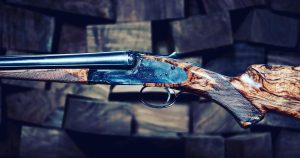Understanding the Differences Between an Upland Field Gun vs. Clays-Shooting Sporting Gun
When it comes to the world of firearms, there are a wide variety of guns designed for specific purposes. Hunting enthusiasts are often faced with the decision between an upland field gun and a clays shooting sporting gun. While both serve their intended purposes, they have distinct differences that set them apart. In this article, we will explore the characteristics, features, and applications of these two types of guns, allowing you to make an informed choice based on your needs and preferences.

Understanding the Upland Field Gun: A Versatile Companion for Hunting Enthusiasts
The upland field gun, as the name suggests, is primarily designed for hunting in upland areas, such as fields, woodlands, and open countryside. These guns are typically lightweight, compact, and easy to maneuver, making them ideal for navigating through dense vegetation or rugged terrains. One of the key features of an upland field gun is its shorter barrel length, which allows for quick and agile handling.
Another important aspect of upland field guns is their versatility. They are designed to handle a wide range of different game, from small upland birds like quail or grouse to larger game like pheasants or turkeys. In addition to 12 gauge, the guns are often chambered for smaller gauges like 20 or 28, which provide a lighter recoil and increased accuracy at closer distances. Additionally, upland field guns generally have a shorter effective range compared to other types of shotguns, as they are designed for shooting in tighter quarters.

Decoding the Clays Shooting Sporting Gun: Unveiling its Precision and Performance
Clays shooting sporting guns, on the other hand, are specifically designed for the sport of clay pigeon shooting. This discipline requires a high level of precision, accuracy, and consistency. These guns are typically longer, heavier, and more rigid than upland field guns. The longer barrel length of a clays shooting sporting gun offers improved swing and follow-through, allowing shooters to track the trajectory of the clay targets more effectively.
In terms of gauge, clays shooting sporting guns are commonly available in 12 gauge. The larger gauge provides more power and a wider shot pattern, which is necessary for breaking fast-moving clay targets at longer distances. Furthermore, these guns often come with features such as adjustable stocks, recoil reduction systems, and extended choke tubes, enabling shooters to customize their guns to suit their individual shooting styles and preferences.
Unveiling the Distinctions: Comparing Upland Field Guns and Clays Shooting Sporting Guns
While both upland field guns and clays shooting sporting guns fall under the category of shotguns, their differences in design and purpose set them apart. Upland field guns prioritize maneuverability, versatility, and handling in tighter quarters, making them well-suited for hunting in upland areas. On the other hand, clays shooting sporting guns prioritize precision, accuracy, and the ability to break fast-moving clay targets at longer distances, making them the preferred choice for clay pigeon shooting enthusiasts.

The distinctions between these two types of guns extend beyond their physical characteristics. It’s essential for hunters and clay shooters to understand their individual needs and preferences to make an informed choice. Whether you’re a passionate hunter or a clay shooting enthusiast, selecting the right firearm for your chosen pursuit will enhance your overall experience and increase your chances of success.
In conclusion, the differences between upland field guns and clays shooting sporting guns lie in their design, features, and intended purposes. The upland field gun excels in maneuverability and versatility, making it suitable for hunting in upland areas and handling a variety of game. On the other hand, the clays shooting sporting gun focuses on precision and performance, allowing shooters to break fast-moving clay targets at longer distances. By understanding these distinctions, you can make an informed decision and choose the gun that best suits your needs and preferences, enhancing your shooting experience.
# # #


Comments